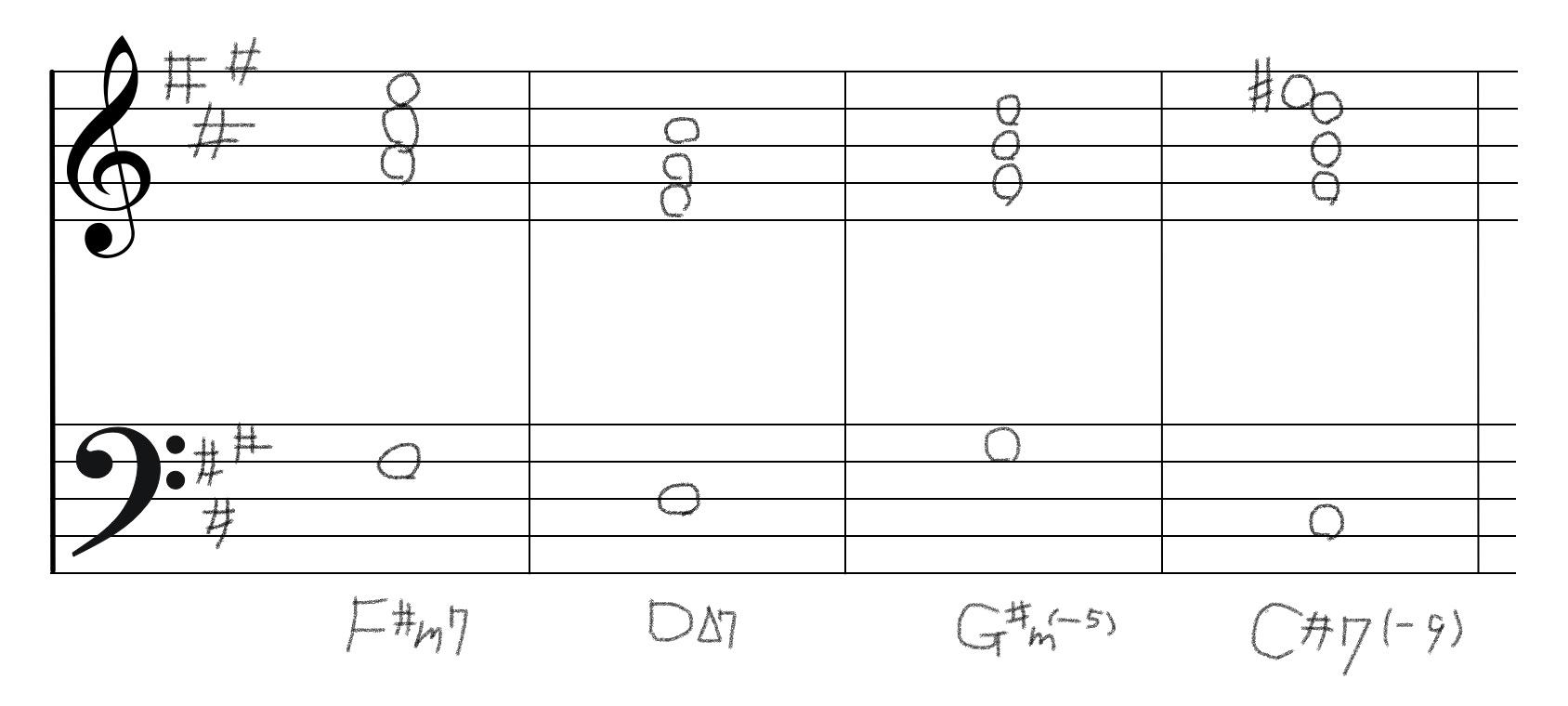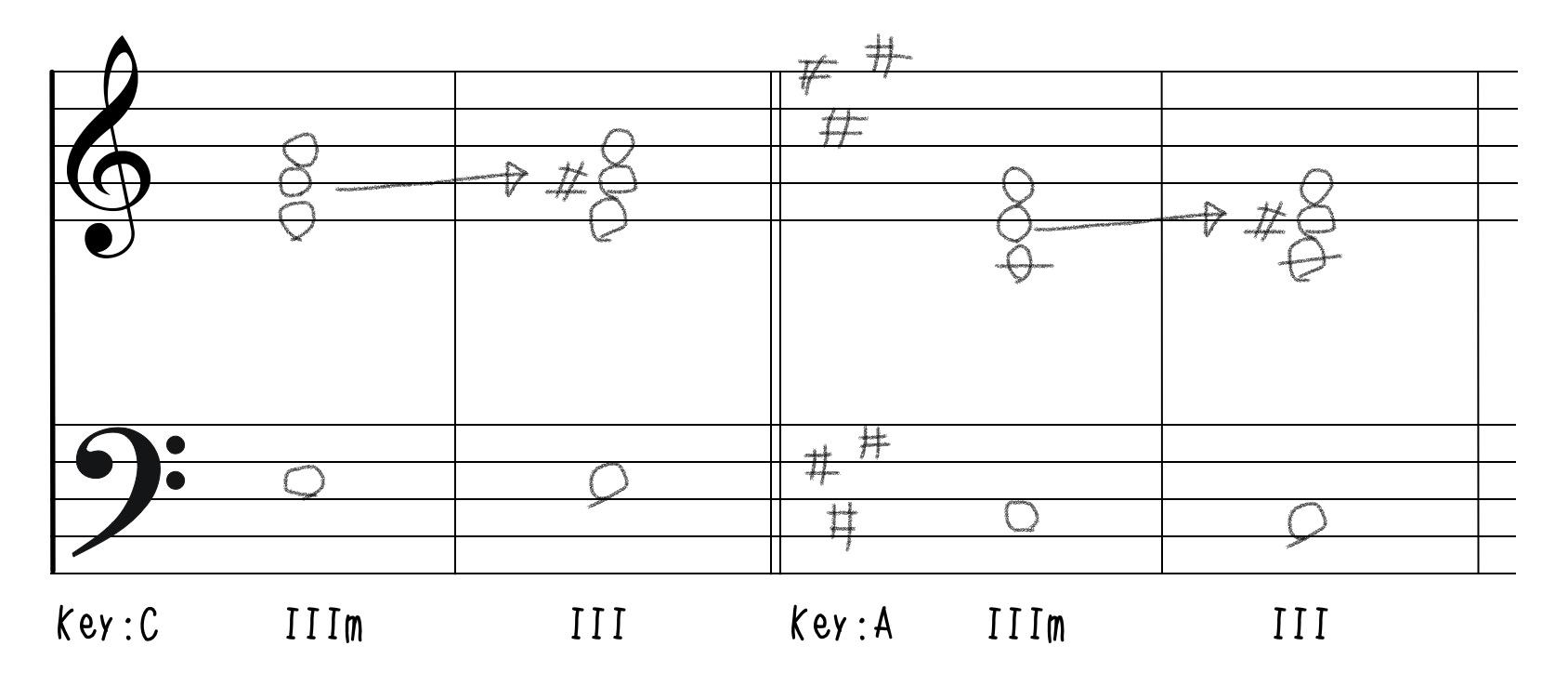Please analyze what’s clashing on my track
- This topic has 4 replies, 2 voices, and was last updated 1 year, 3 months ago by
 Anonymous B.A.G..
Anonymous B.A.G..
-
AuthorPosts
-
Anonymous B.A.G. @baggie
Hi,
just made a loop-based track. I layered two loops together, one is labeled ‘F#m’ and the other ‘A’. It’s not bad, but somehow the harmony doesn’t quite fit beautifully.
Based on my knowledge, these two should harmonize relatively well since they share the same scale, but I’ve heard that even within the same key, they may not always blend seamlessly. I’ll try swapping the samples, but I’d like to study what might be causing the harmony to feel off.
I have finished reading up to Chapter I of chord/melody/rhythm.
Cheers!
*This is a sample topic to demonstrate how to use the community.
Attachments:
You must be logged in to view attached files.Amachan @amachanNice groove! OK, there’re many patterns of a melody conflicting with a chord. Here’s the chord progression of the electric piano loop:

In A major key degree, this is 6-4-7-3 progression.
The first two chords get along well with the brass melody. But on the third chord, melody is like “C♯-B-A, A-B-C♯” while chord root is G♯. Both C♯ and A are non-chord tones and A is especially dissonant when ringing over G♯. So the phrase starts and end with unstable relationship.
Or in a macro perspective, the chord, G♯m(-5) creates strong instability in tonality, while the melody is composed mostly of stable tones. Therefore, to simplify, it can be said that it’s not ideal when the intention to stabilize or destabilize the music diverges between the melody and the chords at this point (though it’s not always a bad thing).Then the last chord, this is an intensified version of quality-changed III chord. It involves accidental sharp—E is raised to E♯. Despite this, the melody progresses from F♯ to E, sounding the notes a semitone above and below E♯ in succession. This creates a significant dissonance, which feels mismatched with the chord progression. This is clashes between the notes in the key and the note outside the key, so it may feel even more intense dissonance than that on the third chord.
Sample loops often utilize notes outside of the key. Therefore, even though the samples should theoretically match according to the key labels, they may sound dissonant when layered together.
Anonymous B.A.G. @baggieThank you so much for even providing the sheet music, it’s really appreciated! Indeed, somewhere in chord chapter I, I remember reading a warning about being cautious with the half-step upper neighbor. Now I’ve truly got it. One last thing I’d like to ask: Why do you say E♯ instead of simply F? What’s the difference?
Amachan @amachanSheet music is not merely a system for indicating where to press the keys. It functions as a message card that communicates what is happening musically. It might be helpful to compare it side by side with the key of C.

In solfa terms, the quality change from IIIm to III involves so turning into so♯, meaning the fifth note of the key is raised by a semitone. In the key of A, this corresponds to E becoming E♯. Calling it F would imply that the note originally was F♯ and has been lowered to F, which doesn’t accurately represent what happens during the transition from IIIm to III in this context.
Anonymous B.A.G. @baggieOh I see, thanks again! I never thought that Solfa would become important in chord analysis as well as melody.
-
AuthorPosts
- You must be logged in to reply to this topic.
 Liberal Music Theory
Liberal Music Theory